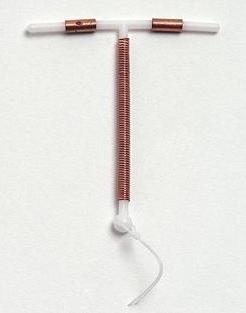Copper
Medically reviewed by Drugs.com. Last updated on Nov 7, 2023.
Pronunciation
(KOP er)
Index Terms
- Cupric Chloride
- Cupric Chloride Dihydrate
Dosage Forms
Excipient information presented when available (limited, particularly for generics); consult specific product labeling.
Capsule, Oral [preservative free]:
Cu-5: 5 mg [dye free]
Solution, Intravenous:
Generic: 0.4 mg/mL (10 mL)
Tablet, Oral:
Coppermin: 5 mg [corn free, rye free, wheat free]
Brand Names: U.S.
- Coppermin [OTC]
- Cu-5 [OTC]
Pharmacologic Category
- Trace Element, Parenteral
Pharmacology
Copper is an essential nutrient which serves as a cofactor for serum ceruloplasmin, an oxidase necessary for proper formation of the iron carrier protein, transferrin. It also helps maintain normal rates of red and white blood cell formation and helps prevent development of deficiency symptoms: Leukopenia, neutropenia, anemia, depressed ceruloplasmin levels, impaired transferring formation, secondary iron deficiency and osteoporosis.
Excretion
Bile (primarily, 80%); intestinal wall (16%); urine (4%)
Use: Labeled Indications
Trace element added to parenteral nutrition (PN) to prevent copper deficiency; orally as a dietary supplement
Contraindications
There are no contraindications listed in the manufacturer's labeling.
Dosing: Adult
Parenteral nutrition additive, maintenance requirement (ASPEN [Vanek 2012]): IV: 0.3 to 0.5 mg/day
High output intestinal fistula: Some clinicians may use twice the recommended daily allowance (ASPEN 2002)
Dosing: Geriatric
Use caution. Start at the low end of dosing range.
Dosing: Pediatric
Parenteral nutrition additive, maintenance requirement (ASPEN [Corkins 2015]; ASPEN [Mirtallo 2004]; ASPEN [Vanek 2012]): Note: Higher doses may be needed in patients with deficiency and increased requirements. IV:
Infants <10 kg: 20 mcg/kg/day
Infants and Children weighing 10 to 40 kg: 5 to 20 mcg/kg/day; maximum daily dose: 500 mcg/day
Children and Adolescents weighing >40 kg: 200 to 500 mcg/day
Reconstitution
IV: Must dilute in a volume ≥100 mL.
Administration
IV: Must be diluted. Do not administer IM or by direct IV injection; acidic pH of the solution may cause tissue irritation.
Dietary Considerations
Dietary adequate intake (AI) (IOM 2001):
1 to 6 months of age: 200 mcg/day (~30 mcg/kg/day)
7 to 12 months of age: 220 mg/day (~24 mcg/kg/day)
Dietary recommended daily allowances (RDA) (IOM 2001):
1 to 3 years of age: 340 mcg/day
4 to 8 years of age: 440 mcg/day
9 to 13 years of age: 700 mcg/day
14 to 18 years of age: 890 mcg/day
>18 years: 900 mcg/day
Pregnancy: 1,000 mcg/day
Lactation: 1,300 mcg/day
Storage
Store at controlled room temperature of 20°C to 25°C (68°F to 77°F).
Drug Interactions
Ascorbic Acid: Copper may decrease the serum concentration of Ascorbic Acid. Management: To minimize the risk for ascorbic acid degradation, add multivitamin product to TPN solution immediately prior to infusion or administer multivitamin and copper in separate containers. Consider therapy modification
Adverse Reactions
The following adverse drug reactions and incidences are derived from product labeling unless otherwise specified. Generally well tolerated; excessive copper levels may result in the following adverse effect.
Hepatic: Hepatic insufficiency (including hepatic necrosis)
Warnings/Precautions
Disease-related concerns:
• Gastrointestinal fistulae: Patients with high output intestinal fistulae may require a larger dose than the recommended daily allowance (ASPEN, 2002).
• Hepatic impairment: Use with caution in patients with hepatic impairment (eg, impaired biliary excretion or cholestatic liver disease).
• Wilson's disease: Administration not recommended.
Concurrent drug therapy issues:
• TPN preparation: Copper ion may degrade ascorbic acid in TPN solutions. To avoid loss, add multivitamin additives to TPN solutions immediately prior to infusion or add to separate TPN solution container.
Dosage form specific issues:
• Aluminum: The parenteral product may contain aluminum; toxic aluminum concentrations may be seen with high doses, prolonged use, or renal dysfunction. Premature neonates are at higher risk due to immature renal function and aluminum intake from other parenteral sources. Parenteral aluminum exposure of >4 to 5 mcg/kg/day is associated with CNS and bone toxicity; tissue loading may occur at lower doses (Federal Register, 2002). See manufacturer's labeling.
Monitoring Parameters
Copper and/or ceruloplasmin serum concentrations in long-term parenteral nutrition patients (twice monthly) and patients with burns, cholestasis, hepatic failure, or high output gastrointestinal fistulas (ASPEN [Vanek 2012])
Pregnancy Considerations
Animal reproduction studies have not been conducted.
More about copper topical
- Compare alternatives
- Reviews (1,733)
- Side effects
- Dosage information
- During pregnancy
- Drug class: miscellaneous vaginal agents
Patient resources
Other brands
Professional resources
Other brands
Related treatment guides
Further information
Always consult your healthcare provider to ensure the information displayed on this page applies to your personal circumstances.

